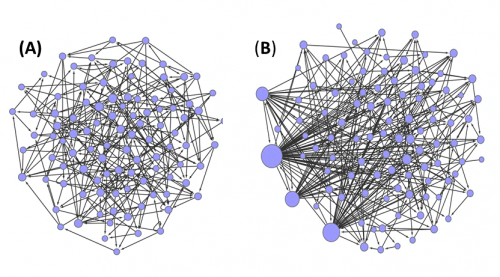Researchers at the Technion and the Weizmann Institute present a new model that describes biological adaptation to unexpected challenges

Research published in the journal Nature Communications. Presents a new model of adaptation of cells and organisms to the environment: improvising new responses to unexpected challenges.
The authors, researchers from the Technion and the Weizmann Institute, base the study on an original model of the genetic control network.
"Biological systems know how to deal not only with routine events but also with the unexpected," explains Prof. Naama Brenner from the Faculty of Chemical Engineering at the Technion. "The ability to adapt to unexpected changes and challenges indicates that beyond the 'toolbox' that developed in it during evolution, the organism is also equipped with the ability to improvise; In other words, the organism is a learning system capable of responding ad hoc to new situations."
Prof. Brenner studied the aforementioned learning ability at the microscopic level with the doctoral student Hillel Schreier from the inter-unit program for applied mathematics at the Technion and with Dr. Yoav Soan from the Department of Biomolecular Sciences at the Weizmann Institute. According to her, "Our computational basis is a network model that describes the adaptability of the organism to the changing environment."
"A certain kind of evolution is happening inside our bodies all the time," says Dr. Suan. "Every cell in the body, every plant and every animal is required to adapt to a never-ending flood of internal changes unique to that individual. Natural selection cannot adequately explain how these adaptations occur, since the mechanism of natural selection does not generate changes within individuals but mostly 'selects' them based on genetic mutations that appeared randomly. The mechanism of natural selection therefore explains adaptation processes in a large population, but not within each and every individual."
Biological systems, unlike engineering systems, are a product of evolution; They are not planned in advance but develop on the fly in response to changes and new challenges. According to Prof. Brenner, "the biological cell has a huge number of degrees of freedom through which it improvises, and in response to new and unfamiliar situations it is able to initiate various processes of self-organization."
Insist on basic science
Prof. Brenner heads one of the Network Biology Research Laboratories operating within the Lori Lockey Center for Life Sciences and Engineering. "Our goal is to promote interdisciplinary science that studies the various biological systems and phenomena: synapses, neuronal networks, genetic networks, multicellular organism development, populations, evolution and more. We live in a fascinating time - life sciences and research technologies are developing and improving rapidly. In fact, these technologies, for example genome sequencing, are ahead of our ability to understand the information they provide us. That's why we have a lot of work: to develop theories based on the experiments that technology allows us. There is a difficulty and a challenge to reach an in-depth understanding, beyond statistical correlations that may have applied value. We as scientists in the academy have the right and responsibility to insist on basic science."
Prof. Brenner completed a bachelor's degree at the Hebrew University (Physics, Mathematics and Computer Science) and went on to a doctorate in the Faculty of Physics at the Technion, under the guidance of Prof. Shmuel Fishman. After her doctorate, she decided to make a "twist" in the direction of life sciences and went to do a post-doctorate with professors Bill Bialek and Rob de Ruyter van Steveninck (Bialek & de Ruyter van Steveninck) at the NEC laboratories - a private research institute located in Princeton, New Jersey. There she entered the field of Computational Neuroscience. She then worked for three years at Insightek, the Israeli company that developed technology for non-invasive surgery - removal of tumors using a focused beam of ultrasound waves. In 2001, she was invited by the Faculty of Chemical Engineering at the Technion to take part in a joint study program with the Faculty of Biology. "This is where I started researching genetic control networks in yeast together with Prof. Erez Brown, whom I met during my PhD as a lecturer in the biophysics course. It was an amazing time - every week we discovered something new. Working with Prof. Brown, and in experiments conducted by Prof. Soan on flies, the ability of cells and organisms to adapt to the changing environment through improvisation was revealed. These experiments inspired the current theoretical work on adaptation in control networks.
At the same time, Prof. Brenner entered into a project of monitoring the evolution of bacterial communities using a new technology - growing bacteria in microdroplets. In this project, the researchers are trying to develop an "evolution machine" that will allow them to follow in the laboratory evolutionary processes between cells inside the droplet and between populations growing in neighboring drops. This project was conducted in collaboration with three other groups of researchers in Europe and New Zealand, and funded by the Human Frontier Science Program (HFSP).
For the full article in the journal Nature Communications click here

One response
They didn't explain how this cell works at Akhals and they just picked up the Technion and the professorship